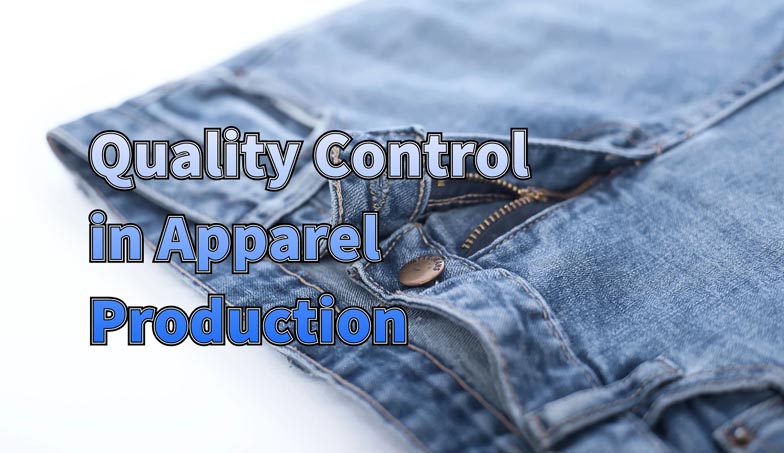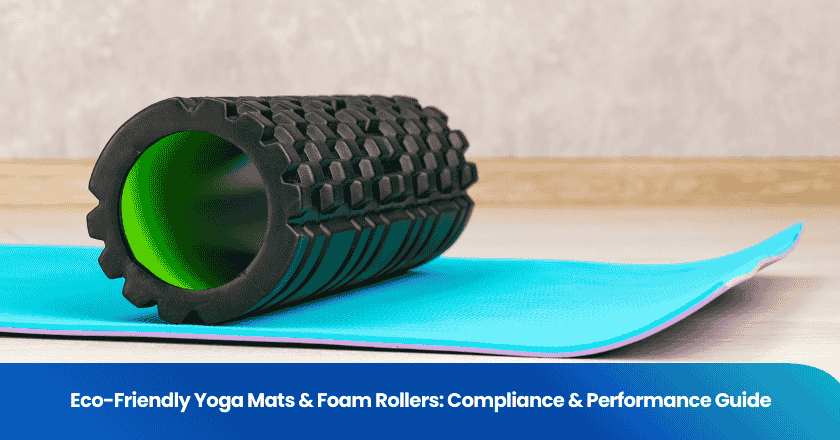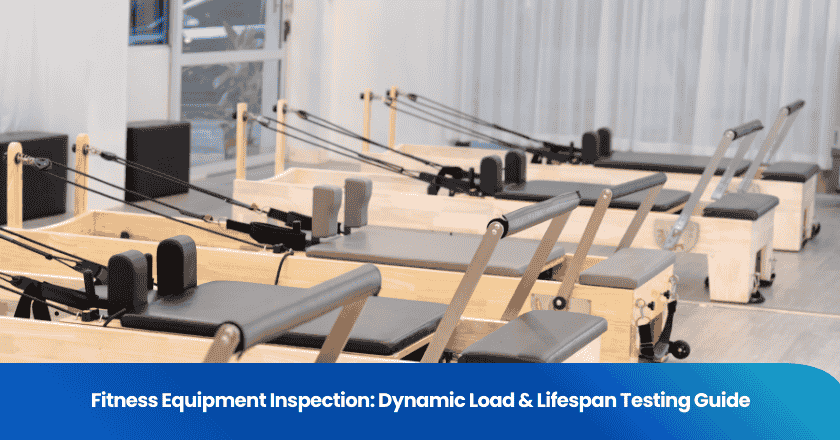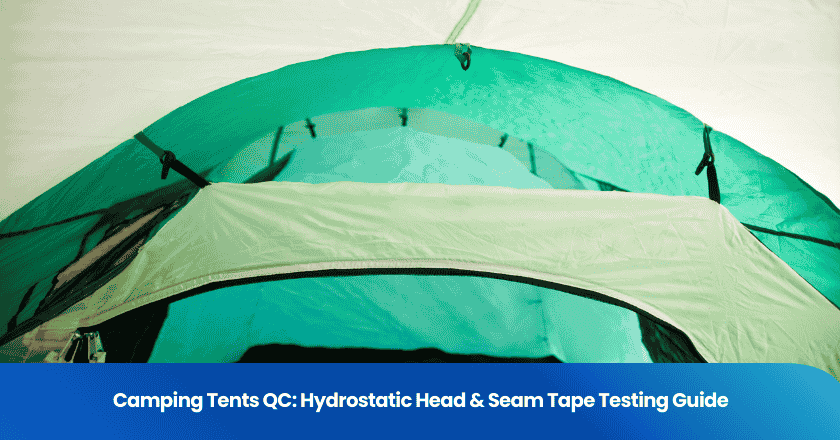
Quality control is the core of the garment production process, ensuring that products meet customer expectations, comply with safety standards, and enhance brand reputation. In an industry where quality determines success or failure, a robust quality control process helps manufacturers maintain consistency, reduce returns, and improve customer satisfaction.
The clothing industry faces various challenges, including variations in raw materials, human errors in the production process, and constantly changing customer demands. Meeting strict compliance standards and controlling costs further complicate this task.
Effective quality control practices are crucial for overcoming these challenges and consistently delivering high-quality products.
1. Understand the basics of quality control
What is quality control in garment production?
Quality control in garment production is a systematic process, with the core being to ensure that every garment strictly meets predefined standards and specifications. This process spans the entire production cycle, from the procurement of raw materials to the delivery of the final finished product, with quality control being integral to every step.
Through comprehensive inspection, testing, and monitoring of materials, processes, and finished products, quality control personnel can promptly identify and address potential quality issues, ensuring the overall quality of clothing products.
Key quality parameters in clothing
In garment production, quality control involves multiple key quality parameters, which collectively determine the quality and performance of the garments.
• Fabric quality: Fabric is the foundation of clothing, and its quality directly affects the durability, texture, and color fastness of the garment. High-quality fabric should possess good wear resistance, wrinkle resistance, and color fastness to ensure that the garment maintains its good appearance and performance even after prolonged wear and washing.
• Sewing process: The sewing process is an indispensable part of garment production, and its quality directly affects the durability and aesthetics of the garments. During the quality control process, strict inspections are required for the uniformity, strength, and alignment of the stitches to ensure that the sewing of each garment meets the established standards.
• Pattern: Pattern is the soul of fashion design, determining the size specifications and overall shape of clothing. In quality control, pattern is a crucial parameter. Through precise measurement and comparison, it ensures that the pattern of each garment meets design requirements, satisfying consumers' wearing needs and aesthetic expectations.
Through strict quality control, we can ensure that the quality and performance of clothing products are optimized to meet the needs and expectations of consumers.
2. Develop a quality control plan
In the garment production process, formulating a comprehensive and effective quality control plan is crucial to ensuring product quality. The core of the plan lies in identifying key control points in the production process and constructing a series of rigorous management measures around these points.
Identify the key control points in the production process
An in-depth analysis of the entire production process is required to identify the links that have the greatest impact on product quality. These key control points are usually steps in the production process that are prone to problems or defects, such as fabric cutting, sewing, or post-finishing. By precisely identifying these key control points, we can implement more targeted inspection and prevention measures to ensure strict quality control at every key stage.
To identify these key control points more effectively, we can adopt a risk assessment approach to evaluate potential risks in each step of the production process. Through this assessment, we can understand which steps are most prone to problems and the potential consequences of these issues, enabling us to formulate targeted preventive measures.
Develop Standard Operating Procedures (SOPs)
Once the critical control points have been identified, the next step is to develop Standard Operating Procedures (SOPs). SOPs serve as a clear roadmap for quality inspection and standardized workflows, specifying the specific operational steps, inspection methods, and preventive measures for each critical control point. By developing SOPs, we can reduce variability in the production process, improve work efficiency, and ensure that every operator works according to a unified standard.
The formulation of SOPs requires thorough consideration of the actual production situation and the skill level of operators, ensuring that they are both operable and can effectively guarantee product quality. It is also necessary to conduct regular reviews and updates of SOPs to adapt to changes and improvements in the production process.
Define quality standards and technical specifications
To ensure that all stakeholders align with the target quality level, it is necessary to establish a set of quantifiable quality standards and technical specifications for materials, components, and finished products. These standards and specifications should be clear, specific, and easy to measure and verify.
When formulating quality standards and technical specifications, it is necessary to fully consider the needs and expectations of customers, as well as industry standards and regulatory requirements. At the same time, it is also necessary to conduct regular reviews and updates of standards and technical specifications to ensure that they remain in sync with market demands and technological developments.
3. Quality control methods in garment production
In the garment production process, quality control is a crucial step to ensure product quality and meet customer needs. To achieve this goal, garment enterprises have adopted various quality control methods, including key links such as in-line inspection, final inspection, and pre-shipment inspection. At the same time, strict laboratory testing of fabrics and accessories is not overlooked.
Inspection on the production line
During the production process, professional quality inspectors conduct real-time inspections of each production step to ensure that each process meets the established quality standards. Identifying issues early on allows for timely correction of deviations in production, effectively reducing waste and rework, and improving production efficiency. Through inspections on the production line, enterprises can ensure the quality stability of products during the production process, laying a solid foundation for subsequent quality control.
Terminal inspection
After production is completed, the quality inspection department will conduct a comprehensive inspection of the finished products to ensure that each product meets all quality standards before packaging. The final inspection not only focuses on the appearance and craftsmanship of the products, but also strictly controls aspects such as product dimensions and sewing quality. Through the final inspection, the company can ensure that all finished products meet the quality level expected by customers and enhance market competitiveness.
Pre-shipment inspection
Before shipping, the company conducts a comprehensive and meticulous inspection of the products that are about to be dispatched, ensuring that they meet the specific requirements of the customers. The pre-shipment inspection not only covers the quality and appearance of the products, but also verifies aspects such as packaging and labeling, to ensure that the products are not damaged during transportation and meet the personalized needs of the customers.
Laboratory testing of fabrics and accessories
Enterprises conduct rigorous laboratory tests on the purchased fabrics and accessories, including color fastness tests, tensile strength tests, and chemical safety tests. Through these tests, enterprises can ensure that the raw materials comply with relevant regulations and quality requirements, providing a strong guarantee for producing high-quality clothing products.
The integrated application of these methods can ensure that garment products maintain high quality throughout the production process, meeting customers' expectations and needs.
4. Utilize technology to enhance quality control
Digital tools for quality monitoring
In today's digital era, quality monitoring has evolved beyond traditional manual inspections and sampling tests, relying more on advanced digital tools and technologies. Digital platforms enable real-time monitoring of production lines, enhancing transparency and responsiveness.
Automated quality control system
The automated quality control system serves as a crucial component of digital quality monitoring. The automated system utilizes advanced imaging technology and AI to detect defects, achieving higher accuracy and speed.
Application of data analysis in defect prediction
Analyzing production data helps predict and prevent defects, reducing downtime and costs.
5. Continuous monitoring and improvement
Establish a feedback mechanism
To continuously enhance service quality and product performance, enterprises or manufacturers are well aware of the importance of establishing a comprehensive feedback mechanism. This mechanism serves as a "stethoscope" for the enterprise, enabling timely detection of deficiencies and potential areas for improvement in processes through regular internal inspections and proactive collection and listening to valuable customer feedback. We encourage every employee to become a guardian of quality, whether in the production line or customer service department, to identify and report issues in their daily work, providing a continuous driving force for continuous improvement.
Measure success using Key Performance Indicators (KPIs)
To better measure our success and guide the direction of improvement, we have selected a series of key performance indicators (KPIs) as evaluation criteria. These KPIs include, but are not limited to, defect rate, on-time delivery rate, and customer satisfaction. By regularly analyzing data related to these indicators, we can gain in-depth and actionable insights, accurately identify problems, and develop practical improvement measures.
Adopt lean production methods to ensure quality
Implement lean production as a core strategy to ensure quality. Lean production is not just a methodology, but also a cultural concept that pursues excellence. By practicing various principles of lean production, such as eliminating waste, simplifying processes, and continuous improvement, we continuously optimize our production and service processes.
END
Effective quality control safeguards brand reputation, reduces costs, and ensures customer satisfaction. By embedding robust quality control practices, clothing manufacturers can stand out in a highly competitive market, fostering long-term success and profitability.
Grow your business with TradeAider Service
Click the button below to directly enter the TradeAider Service System. The simple steps from booking and payment to receiving reports are easy to operate.



